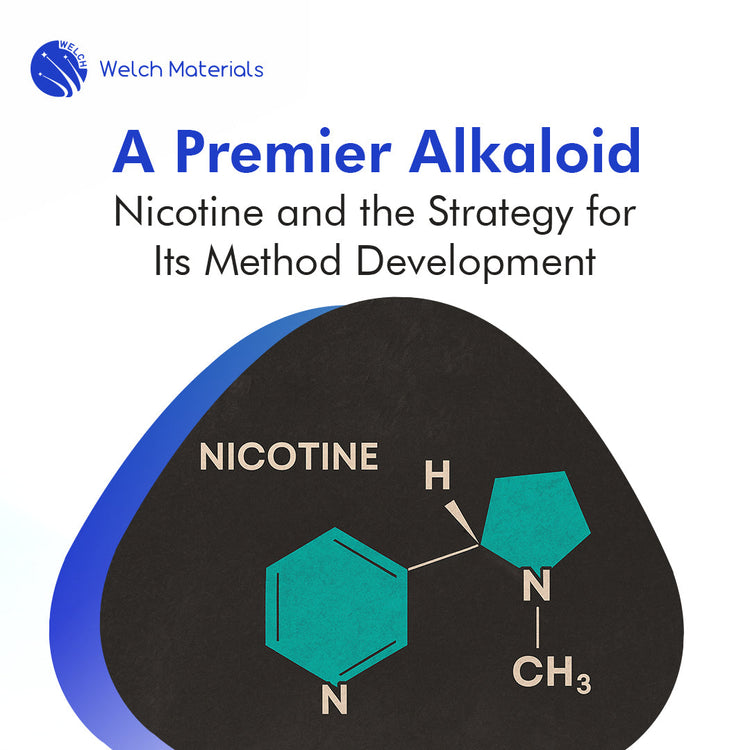Table of contents
Introduction

Nicotine is an alkaloid found in Solanaceae species (e.g. tobacco). Alkaloids are nitrogen-containing basic organic compounds occurring in nature and exhibiting basic properties. Common alkaloids include ephedrine, caffeine and atropine.
When inhaled during smoking, nicotine is rapidly transported in the blood and reaches the brain in about 10 seconds, stimulating release of dopamine and other neurotransmitters that produce pleasure and arousal. This effect fades quickly, producing irritability and restlessness when not smoking and driving the urge to smoke again. Therefore, nicotine is a major contributor to tobacco addiction.
Although nicotine poses certain hazards, analytical methods for nicotine remain relatively few. This article presents a nicotine determination method and briefly outlines the method-development rationale.

Analytical Approach
Existing methods for nicotine analysis are scarce. Using a conventional C18 column gives very weak retention of nicotine, which hampers reliable quantification. For mass-spectrometric detection, positive-mode ESI under acidic conditions protonates nicotine; this allows retention to be enhanced by exploiting ion-exchange mechanisms.
After screening, we selected our Ultisil® DLC UHPLC HILIC Amphion II column. Key features of this column are:
- Suitable for separation of most polar analytes; typical mobile phases are acetonitrile and water without the need for ion-pairing reagents.
- The packing contains both anionic and cationic functionalities (both positive and negative charge centers), so ion-exchange mechanisms substantially increase retention of acidic and basic compounds.
- Strong hydrophilicity makes it well suited for HILIC-mode separation of polar, hydrophilic small molecules or basic compounds.
Experimental Conditions
- Column: Welch Ultisil® DLC UHPLC HILIC Amphion II (2.1 × 100 mm, 1.8 μm)
- Mobile phase: A — 10 mmol/L ammonium formate; B — acetonitrile (A:B = 20:80, v/v)
- Column temperature: 30 °C
- Flow rate: 0.3 mL/min
- Injection volume: 5 μL
- Elution time: 15 mins
Mass spectrometry:
- Ion source: ESI (positive mode)
- Detection: Multiple reaction monitoring (MRM)
- Drying gas: Nitrogen, 400 °C; flow 1000 L/hr
- Collision gas: Argon
- Ion spray voltage: 3 kV
| Analyte | Precursor Ion | Product Ion | Cone | Collision | Polarity |
| Nicotine | 163.2 m/z | 106.1 m/z | 38 V | 12 V | Positive |
| 117.1 m/z | 28 V | ||||
| 132.1 m/z | 12 V |

Conclusion
Under the specified conditions above, the Welch Ultisil® DLC UHPLC HILIC Amphion II (2.1 × 100 mm, 1.8 μm) column enables reliable analysis of nicotine with satisfactory retention and peak shape. Because nicotine is one of the most challenging components to analyze in real samples, solving its determination facilitates separation and analysis of other sample components as well.
Product Information
Note: please contact our sales team or local distributor for ordering information of the DLC version.

